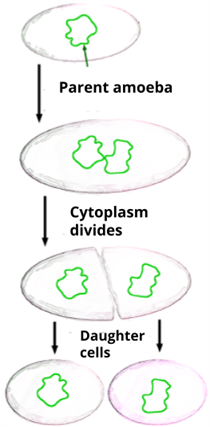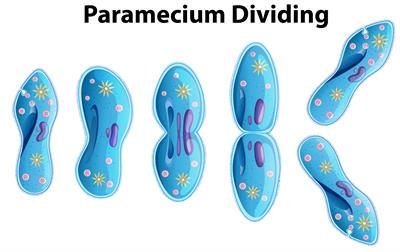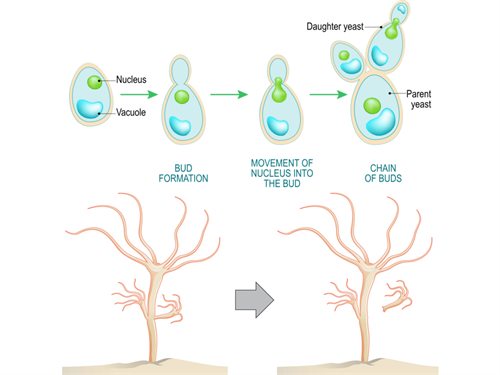PDF chapter test TRY NOW
Asexual reproduction is the production of new organisms from a single parent without the involvement of gametes or sex cells.
The new organism produced through asexual reproduction is exactly identical to the parent. The two common methods of asexual reproduction include:
- Binary fission
- Budding
Binary fission:
The single-celled organism amoeba reproduces asexually through binary fission. During binary fission, the organism splits into two daughter cells. The process begins with the division of the nucleus, followed by the division of the cytoplasm.
In the first, the nucleus of the amoeba divides into two nuclei, then the cytoplasm of the amoeba divides into two, where each part has a nucleus surround by cytoplasm. Thus two daughter cells (daughter amoeba) are produced from one parent amoeba.
In the first, the nucleus of the amoeba divides into two nuclei, then the cytoplasm of the amoeba divides into two, where each part has a nucleus surround by cytoplasm. Thus two daughter cells (daughter amoeba) are produced from one parent amoeba.
Important!
The amoeba approximately takes one hour to divide into two amoebae.

Binary fission of amoeba
Paramecium, Euglena also reproduces asexually through binary fission. In multiple fission, there is production of two or more individuals at the same time from a single parent.

Binary fission by paramecium
Budding:
Bud is a small bulb-like projection or an outgrowth from the body of an organism.
In the process, a bud is formed on the parent organism, and the nucleus divides into two, where one is then passed to the daughter individual. A bud is present on the parent body in budding, which detaches from the parent body to form a new daughter cell.In Hydra, a bud grows on the body of the parent organism. The bud then develops a mouth and tentacles. The new daughter hydra detaches from the parent hydra to form a new daughter hydra that looks like the parent organism.
Example:
Yeast, hydra, sea anemone, corals and sponges

Budding - Top: Yeast and Bottom: Hydra
Reference:
https://upload.wikimedia.org/wikipedia/commons/0/00/Binary_fission.png
https://commons.wikimedia.org/wiki/File:Figure_43_01_02.jpg
